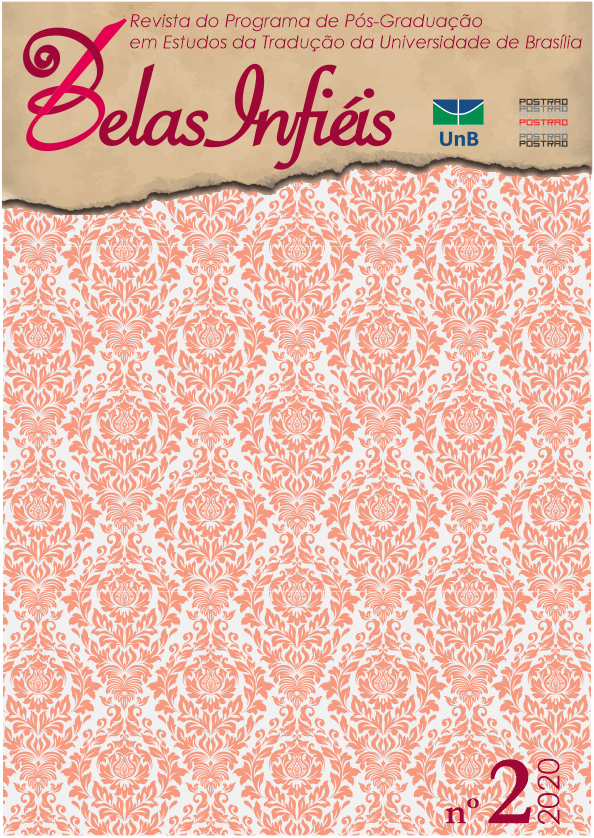“Sim, há uma”: translation and performance into portuguese of “See-line woman” based on Nina Simone’s interpretation
DOI:
https://doi.org/10.26512/belasinfieis.v9.n2.2020.27049Keywords:
Translation. Performance. Nina Simone. Orality.Abstract
“See-line Woman”, musical piece of American oral tradition, was registered in 1939, collected and reproduced in different oral performances, such as those by Leslie Feist (2007), and Nina Simone (1964). Taking as original the constant recording on the album Mississipi Goddam (1964), by Nina Simone, and evidencing the dubious sound and meaning that the recording of the lyrics, i.e. translation of orality, can highlight, I will address some problems related to the translation of song for performance when I come across an original that strains the lyrics of the recorded song differently from the other oralized versions of 1939 and 2007.
Downloads
References
FLORES, Guilherme Gontijo. Posfácio: A diversão tradutória. In: FLORES, Guilherme Gontijo. Elegias de Sexto Propércio. São Paulo: Autêntica, 2014. pp. 515-604.
NINA SIMONE. The official home of Nina Simone/The high priestess of Soul. Disponível em: http://www.ninasimone.com/. Acesso em: 20 jul. 2016.
SIMONE, Nina. Brodway, Blues, Ballads. Phillips, 1964.
THE NINA SIMONE DATABASE. Disponível em: http://www.boscarol.com/ninasimone/pages/php/alb_orig.php. Acesso em: 20 nov. 2018.
WADE, Stephen. The Beautiful Music All Around Us: Field Recordings and the American Experience. Chicago: Univ. of Illinois Press, 2012.
Downloads
Published
How to Cite
Issue
Section
License
Given the public access to this journal, the texts are free to use but requires the recognition of the original authorship and initial publication in this journal to be properly stated.
 The journal allows the use of works published for non-commercial purposes, including the right to submit the work to publicly accessible databases. Published contributions are the sole and exclusive responsibility of the author(s).Â



















